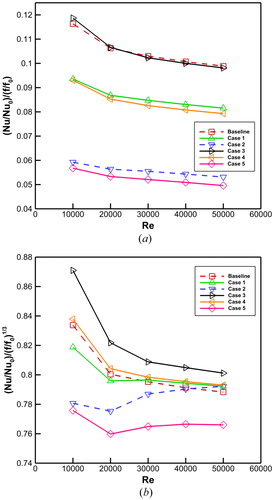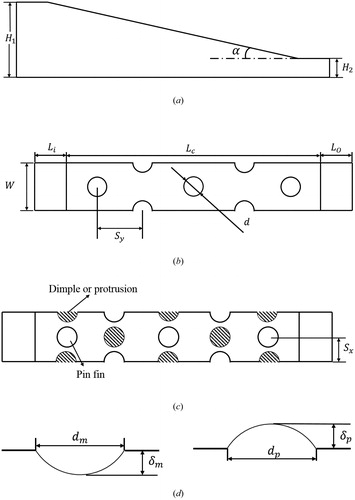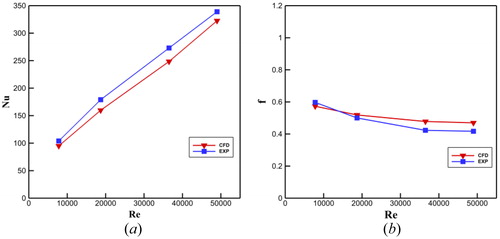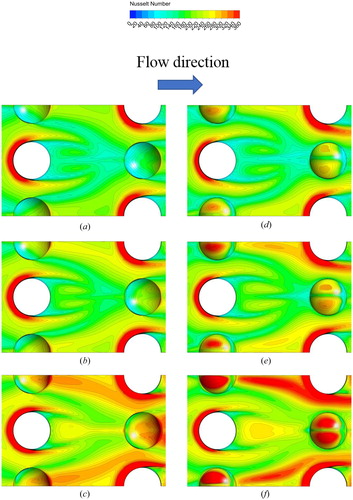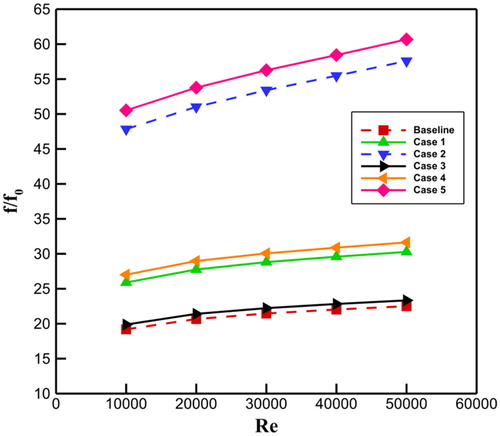Figures & data
Figure 1. Typical cooling structure of gas turbine [Citation3].
![Figure 1. Typical cooling structure of gas turbine [Citation3].](/cms/asset/6a2793f1-d147-417b-a992-6ac1e90787cc/unht_a_1630235_f0001_b.jpg)
Table 1. Studied cases.
Table 2. Grid independence study.
Figure 6. Comparison of the streamline distributions and TKE distributions at the central longitudinal plane at Re = 30,000.
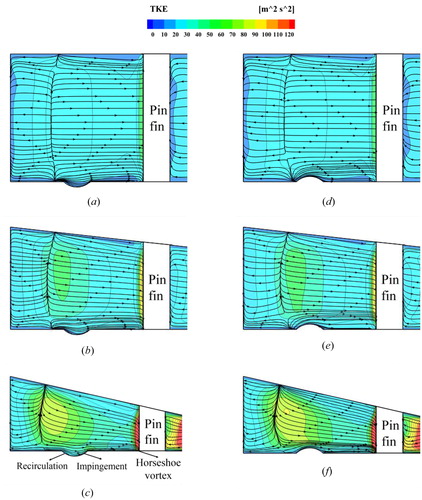
Figure 7. Comparison of the streamline distributions and TKE distributions near the dimple/protrusion at Re = 30,000.
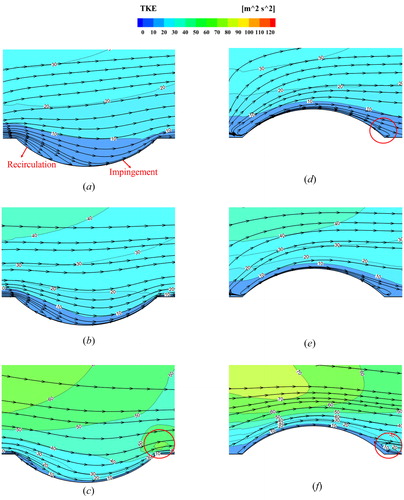
Figure 8. Comparison of the streamline distributions and vorticity distributions at spanwise planes perpendicular to the streamline at Re = 30,000.
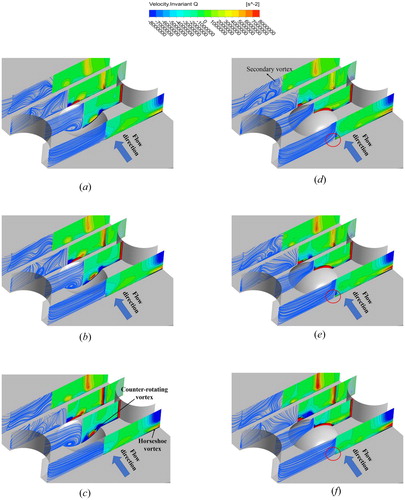
Figure 9. Comparison of the limiting streamline distributions at the endwall surface at Re = 30,000.
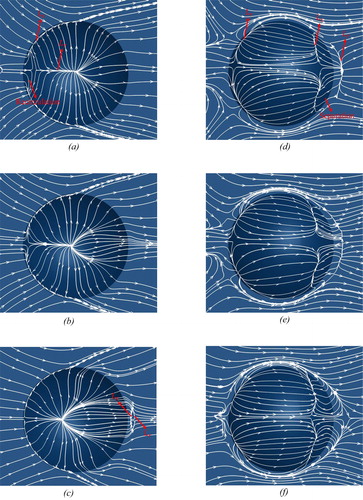
Figure 10. Comparison of the viscous dissipation function on the central longitudinal plane at Re = 30,000.
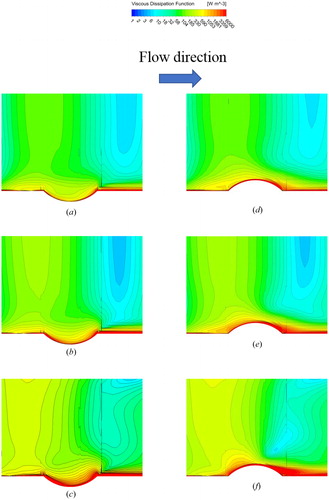
Figure 12. Comparison of the Nusselt number distributions along the streamwise centerline at the endwall surface at Re = 30,000.
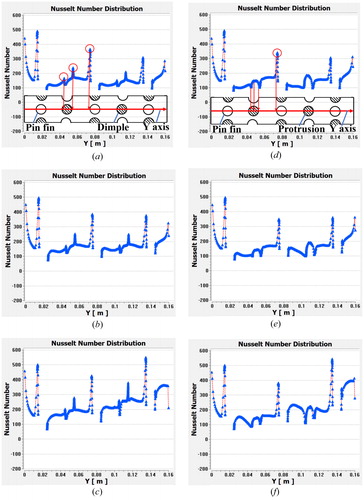
Figure 13. Comparison of the normalized area-averaged Nusselt numbers for Re ranging from 10,000 to 50,000.
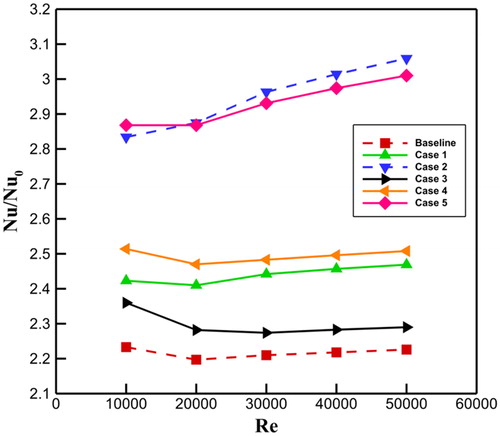
Figure 15. Comparison of the thermal performance of the whole wedge duct for Re ranging from 10,000 to 50,000.
